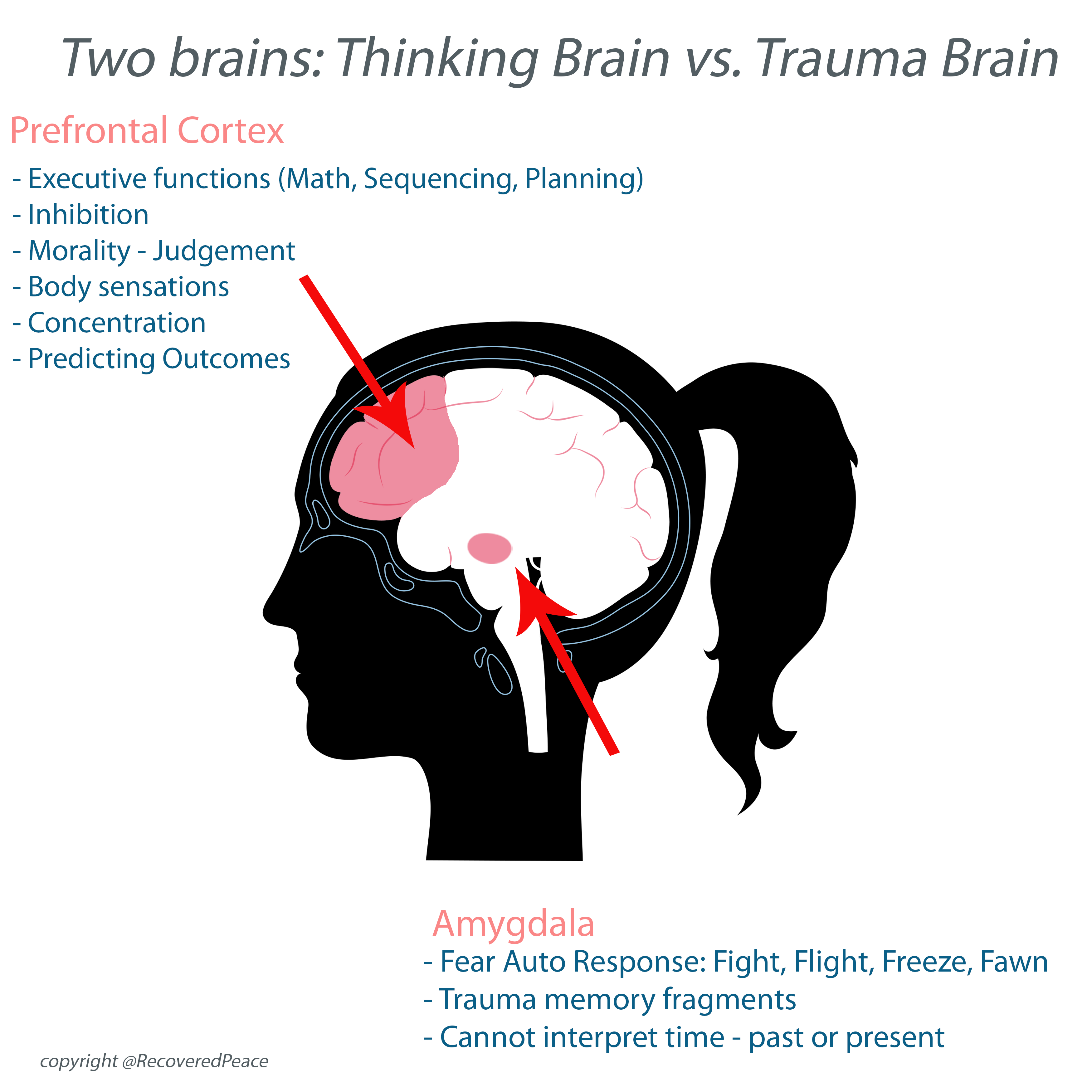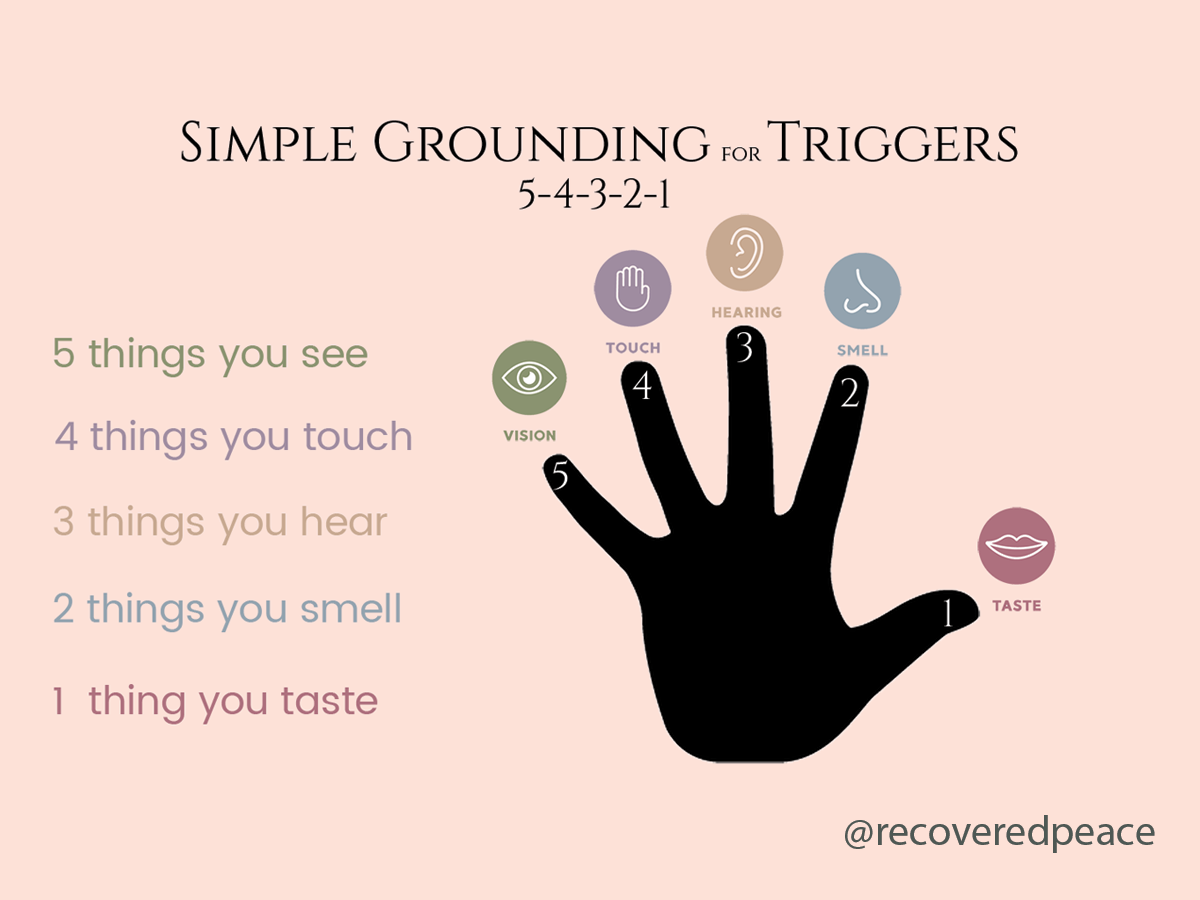Trigger Tools – Managing Trauma Triggers and Anxiety
Betrayal trauma brings “panic attacks” or feeling “triggered”, extreme sadness, extreme fear – all symptoms of betrayal trauma, or left untreated becomes PTSD.
It's a function of the brain and body – trauma is activated and stored in the part of the brain called the amygdala. That part of the brain feels extreme emotion: fear, panic, sadness, anxiety, distress, hopelessness.
The amygdala is a part of the brain that's not able to process time or sequencing, which is why when you're triggered, if feels like it the frightening betrayal is happening right now, or that it will ALWAYS be this way, or that you will never be free of these feelings. But your trauma brain is lying to you!
We need to draw energy away from that part of the brain, into the prefrontal cortex. The prefrontal cortex is where logic, time sequencing, ‘executive functioning' (managing yourself, self-regulation) and sensory functioning (taste, smell, hearing, seeing, tactile) and processing difficult emotions all happen.
The following actions will help you get more into your prefrontal cortex and help your brain “calm down” from the trigger. It can take about 20-30 minutes or more for those brain chemicals to subside.
*Note – we can also experience grief waves, which are similar to triggers and can feel overwhelming but are quite different. Here's an APSATS podcast/video on grief in betrayal trauma.
You can the PDF download the 15 Simple Tips for Conquering Your Betrayal Trauma Triggers handout to keep on your personal device and carry with you. Try some of these tips and find which work best for you.



